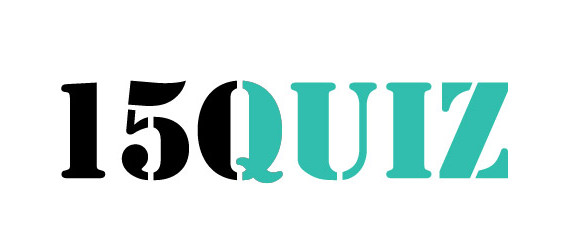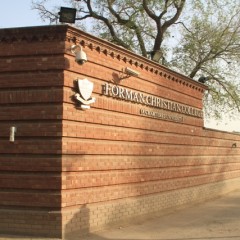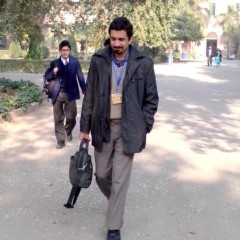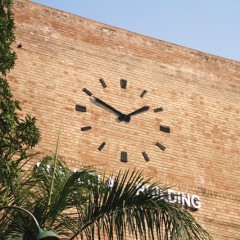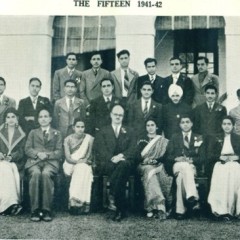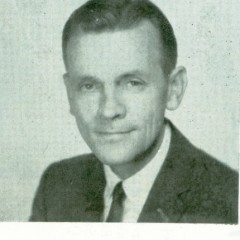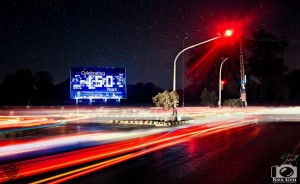Behind the Brick Wall
by Rabia Anjum Many stories shared on this space are about students with ambitious dreams surrounding FCC, or with parents passionate about the heritage of the institute—but for me, FCC did not exist until a few months before my admission. Having lived in Lahore all my life, this may seem odd at first, but FCC was just a hazy illusio. Better known to me as FC College, the mention brought to my mind two main things: “boys” and “matriculation”. Being a product of O/A Levels through and through, I barely thought about it and tried to follow in the footsteps of my peers: I applied to a few foreign universities, and then to LUMS. I didn’t get far enough in the former as my parents disallowed me from pursuing an education abroad, and for the latter, my financial aid application didn’t go through. A month before my final A Level exams, I was devastated—where was I going to go? I didn’t want to be a doctor, let alone an engineer—I really just wanted to study Biology! To be honest, I had my heart set on LUMS—the buildings, the people, every corner seemed so familiar in just a few visits. I was a cell without DNA. So my mother and I were juggling various options in Lahore. She insisted on KC, while I pushed for PU … it was a bloodbath as neither of us was convinced. I had been to both institutes and I didn’t get the feeling I did in LUMS. Call me superstitious, but for me an institute was a whole package—and it all started with the ambiance. And then, one day we were passing by the all too familiar Zahoor Elahi Road, when my mother asks: “How about FC?” “What about FC?” “I hear they’ve been denationalized … and they have made great strides in the past few years. Even in Sciences.” “Okay. Isn’t it for boys?” “Why don’t we find out?” So that’s when she took a turn and for the first time in my nineteen years of life, I saw the institute in its entirety—not just a brick wall I passed by every other day, but a community, a purpose in itself. I didn’t take long to make my decision. As soon as I went past security and on my way towards N-Block, I knew it: this was it. My future institution. This place was my DNA! Three years into my Bachelors, it seems funny I thought the two places were the same. They are so very different, and I’m glad they are. Here at FC, I have the opportunity to toy with the...
My Bond with FCC
by Muhammad Umer Chaudhry After studying for 11 years at an army school, I wanted to go to an army college with the plan to somehow join the military, but my parents had other plans. They asked me to apply to FC College, telling me, “Come on! It’s Gen. Musharraf’s institution (I was a fan).” Well it was a lucky day in 2004 when I did get admission here. At FCC I was fortunate to study under some of the finest and most dedicated Physics teachers who introduced me to this, as I say, “glamorous” subject, and I chose Physics to be my career. I also took admission in the Baccalaureate program here in 2006 and learnt a lot about life other than Physics: how to serve one another by love; how to make yourself a source of happiness or comfort for others rather than being a menace for society; how not to sit back in certain situations but to speak up against the ills of society, against injustice whether it be directed towards us or anybody else. And these lessons are the most precious ones that FCC taught me. I have the deepest love for this institution where the values of inter-faith respect, gender equality, impartiality and opportunities for everyone to progress are stronger than anywhere else in the country. Now I am back at FCC as a teacher of Physics. Fortunately I have found that while the campus is becoming more and more beautiful and full of facilities and infrastructure, the golden values remain the same here as before. I pray that this culture stays like this forever and I want to play a positive part in making it...
And the Time is …
by Eileen Dass When I got the new FCC 2014 calendar, I sent it to my niece in Karachi. One night I got an urgent phone call from her. She said she needed to ask something, and didn’t have much credit left on her cell phone so she wanted a quick answer. I got worried and asked her the problem. She said she had looked at all the pages of the calendar and couldn’t find the “150” on the photograph of the Susheela Building (the September photograph). I asked her, “What time does the clock on the building show?” She answered, “Ten minutes to two.” I asked her, “And what is ten minutes to two?” Finally she got it, and said, “One fifty.” This has been the most interesting calendar FCC has printed to...
Winner of January 150 Quiz: Eileen Dass
Congratulations to Ms Eileen Dass (Rector’s Office) for scoring the maximum number of points in the January 150 Quiz. Eileen beat four others who also got all 10 questions right but sent their answers after her. They are (in order of answers received): Ms Sehrish Mushtaq (Department of Mass Communication), Ms Jacqoline Austin (Department of English), Ms Nimra Nazar (Purchase Department) and Mr Zeeshan Safdar (sophomore). Thank you to everyone who participated and don’t forget to take part in the next quiz. The February 150 Quiz will be announced on 3 February...
Earliest Student Societies
The oldest society of the college is the Debating Society, established in 1887. It organised debates on topics which, surprisingly enough, were mostly political. One topic for a debate in 1905 was: “Resolved that the Indian National Congress has done more harm than good”. (The motion, when put to vote, was carried.) We also find mention of two rival societies, the Academical Society and the Gladstonians. Every year the two societies met at an annual debate which was a popular and much-awaited function. There was a Cosmopolitan Society which met every Saturday in Dr Griswold’s room and whose subscription was one anna per month. The Social Service League was founded in 1907 by Mr Fleming. It had no office-bearers and each member was supposed to render some social service every week and report it to the society. These were published in the Folio. Social work meant anything from reading books to the illiterate to persuading people to give up smoking. A proud report ran like this. “I read Fasan-i-Azad loudly to others in order to impress upon them the bad effects of opium-taking.” A Temperance Society was formed, though we wish to believe it was not needed. Two literary societies were formed in 1889. In 1914-15, we are told, there was a big crop of “crazy gangs” in the college. But, alas, only a few, like “Chaudhary Brotherhood,” “Mota Club” (what weight they carried in college politics we do not know), “Laughing Club” and “Ugly Club” (was membership open or secret?) are mention in the college journal. The Science Society organised by Mr Shah and Mr Benade was formed in 1915. Next year the most illustrious club, the “Fifteen”, was organised. Its membership was coveted by every student for it consisted of only the best. Essentially a literary group , it produced a number of writers and intellectuals. There was also a “Fiverise” Society founded in 1916 whose first Secretary was G. L. Nanda, now the Indian Home Minister. A Speakers’ Union was formed in 1919, and Literary Society founded by Mr M. S. Bhatty. The same year the “Economics Club” and the Rice Philosophical Union were established. The Dramatic Club was organised in 1942, although in many later issues of the college magazine the question was anxiously asked: “Where is the Dramatic Club?” The same question is being asked today. The Griswold History Society came into being in 1923 and Urdu Society in 1924. There is a mention of a Co-operative Sales Society in 1919 with Mr Benade as the man in charge. Its share was valued at Re. 1 and it was compulsory for all students and...
Remembering Dr Ritze
by Dr Rehan Siddiqui In 1966 I got admission and a tuition scholarship for graduate studies at the University of Cincinnati, USA. The university did not offer me an assistantship for my board and lodging. Everybody discouraged me from going to the USA without financial assistance. Dr Fritz Ritze, who was teaching English at FCC, met me in a meeting and discussed the situation with me. He said, “Rehan you must go because I know that you will get the financial assistance when you join the university and show your performance. If you feel you have no money to eat I will support you from New York.” On his encouragement, I went to Cincinnati and got financial assistance. Now I feel that those encouraging words helped me in improving my qualifications. Dr Ritze was a role model and he believed in the college motto: “By love serve one another”. Photograph of Dr Ritze: The Yearbook – Folio: Forman Christian College, 1971-72. Photographs of Dr Rehan Siddiqui from his personal...


